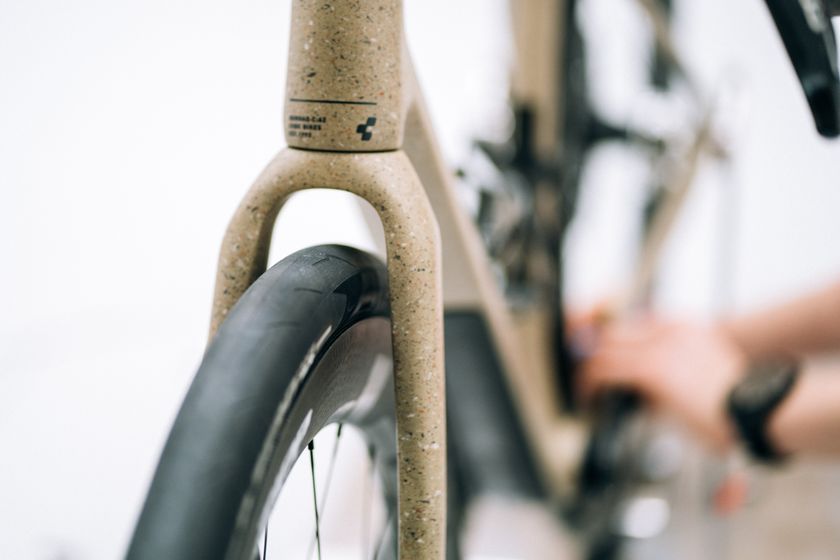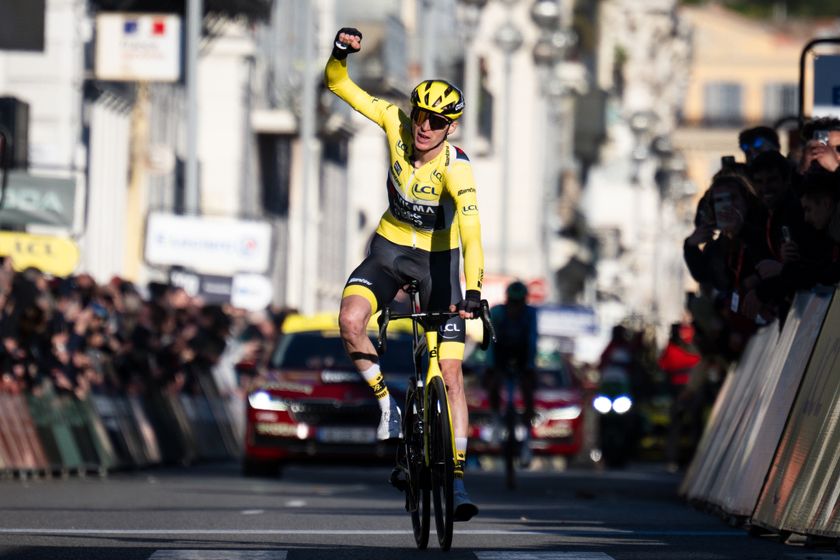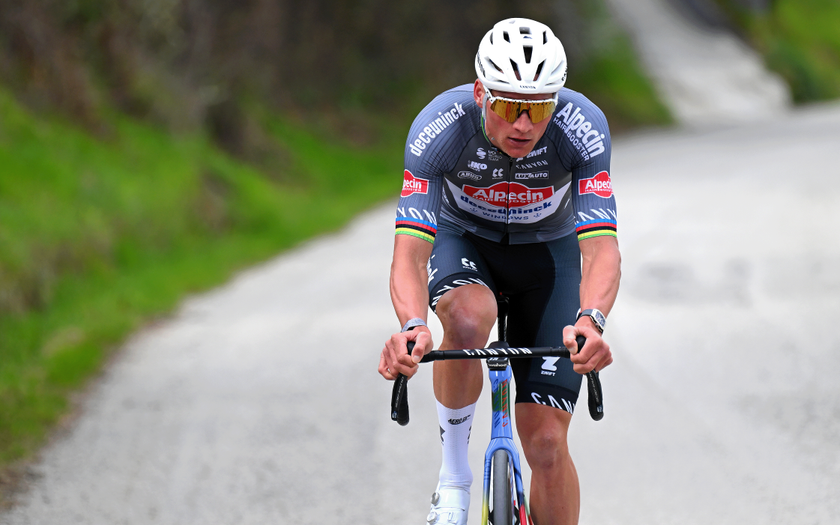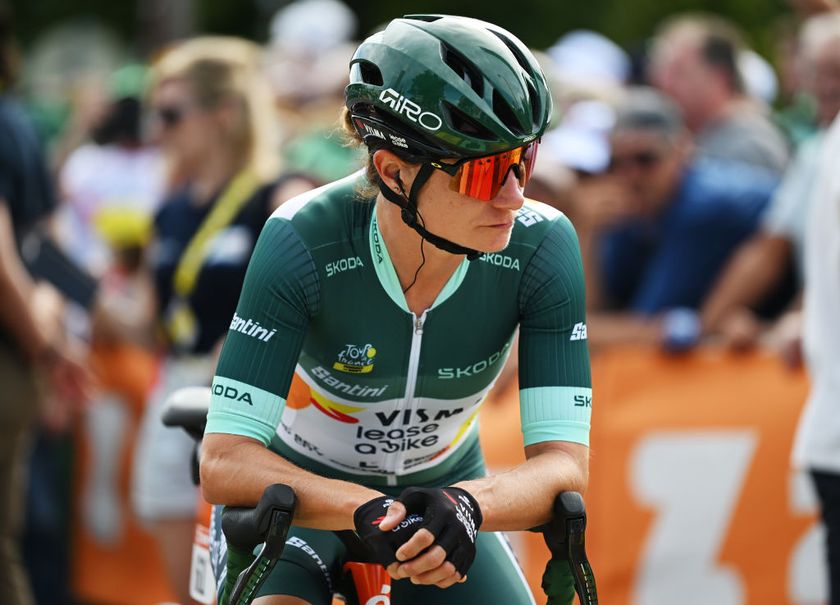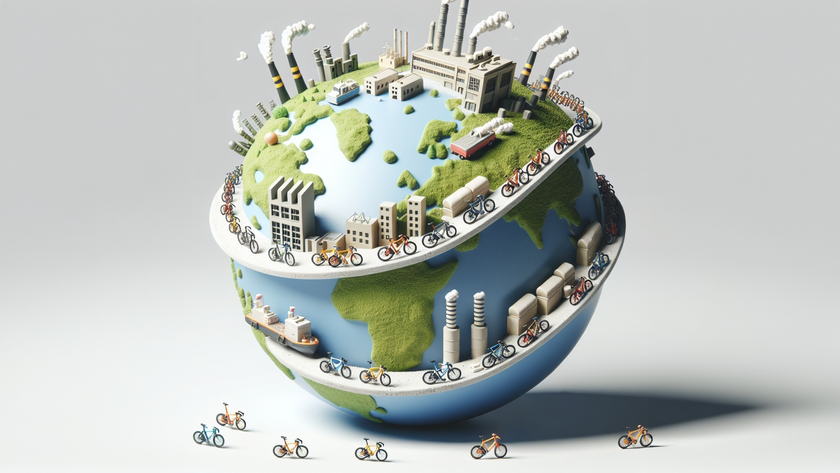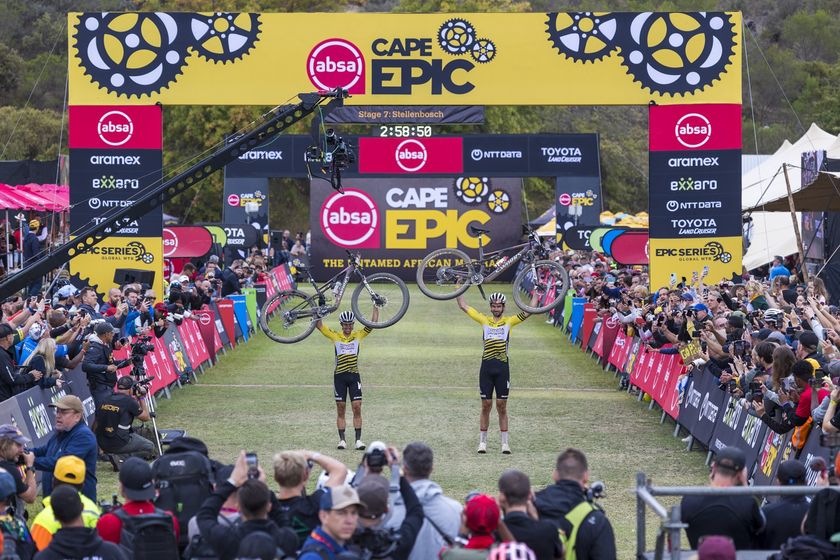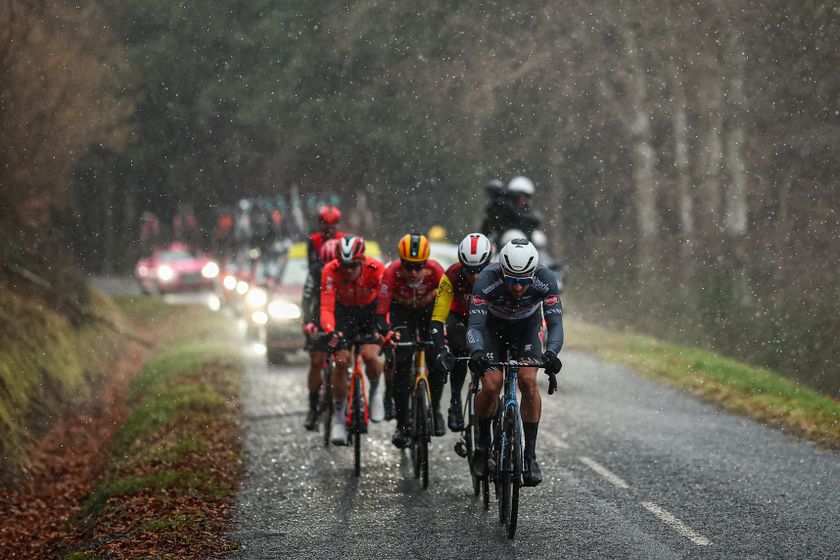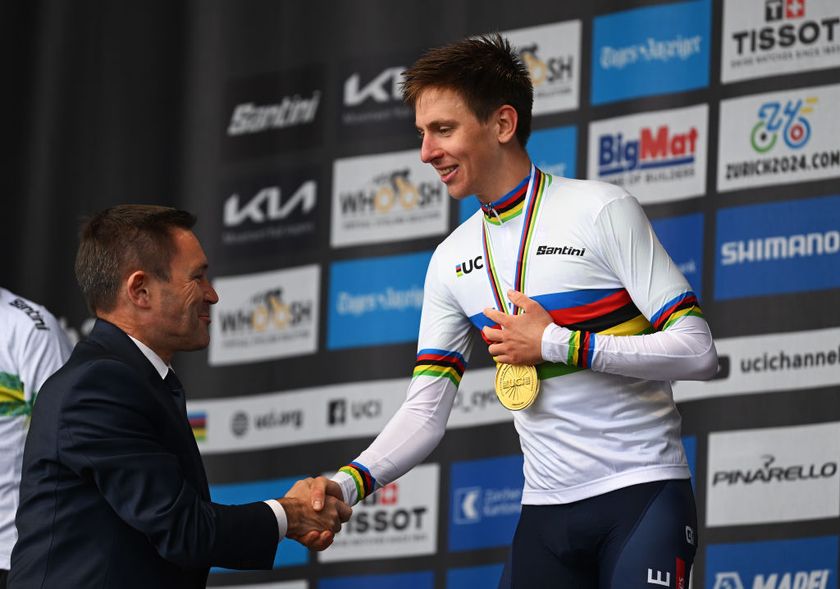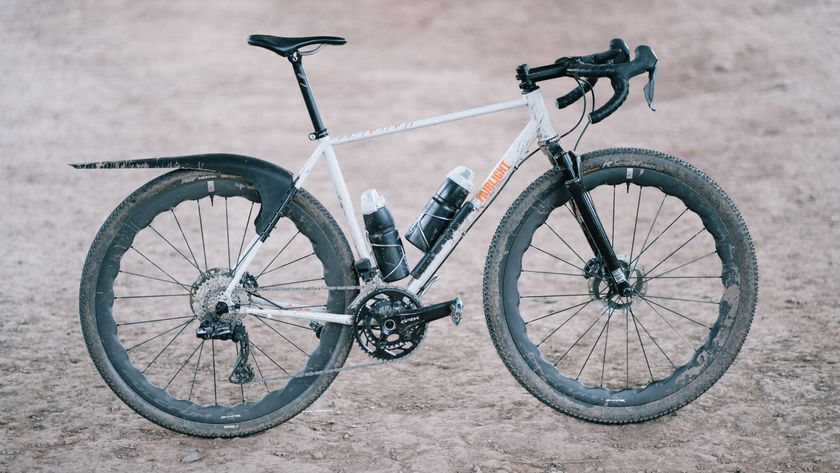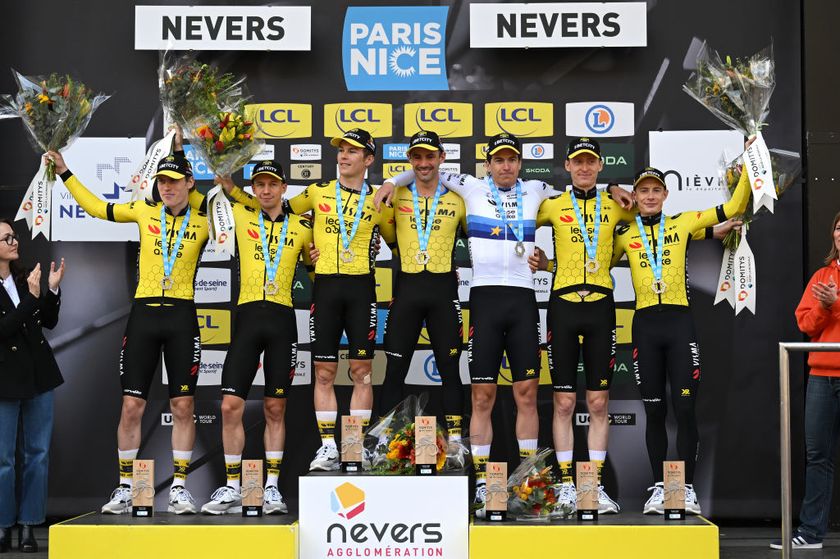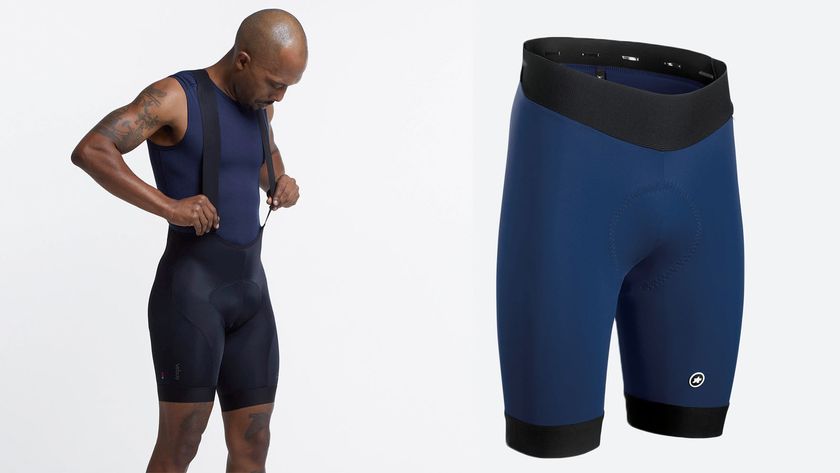7 conclusions from Paris-Roubaix
From the emergence of Nils Politt to the disappointment of Peter Sagan





Demol looks to build Katusha's Politt bureau of Classics riders
In a season of turmoil and disappointment, the emergence of Nils Politt for Katusha-Alpecin offers the struggling team a foothold in the campaign and a rider on which to build their future. His status as a dark horse for the podium in Roubaix was justified with a well-rounded and impressive performance, but it wasn't just his legs that made the grade, with other tell-tail signs to suggest that he can be a consistent force in the future.
Philippe Gilbert wins Paris-Roubaix
Politt takes breakthrough second place at Paris-Roubaix
Van Aert bonks at end of rough Paris-Roubaix
Gilbert's metamorphosis moves him one step closer to Monument immortality
Patrick Lefevere: Gilbert knew exactly what he had to do at Roubaix
Kristoff regrets 'big risk' after using tubeless tyres in Paris-Roubaix
First was his ability to be aggressive at the right moments. He was present in the early move of 23 riders, and with a teammate for company, the 25-year-old could afford to take a backseat and concentrate on staying out of trouble. He was then proactive and laid the groundwork for the winning move with just under 70 kilometres to go.
It wasn't just power Politt displayed. He showed composure, too. When the pace was high, he sat back, measuring his efforts when a rider of lesser equanimity would have gone into the red. When only Gilbert could match Politt's final attack, it showed that the German was more than just a breakaway companion willing to ride for fifth place.
At the finish line, a jubilant Dirk Demol admitted to Cyclingnews that he had followed Politt throughout his career as a U23 rider, and with the Belgian now at Katusha after a winter switch from Trek, Demol has a leader of immense promise. With 'one or two more' signings, as Demol described, Katusha could have one of the most capable Classics teams next year.
However, their collective line up also deserve praise. Marco Haller was immense, Mads Schmidt provided a performance of heroism in the early stages, while Rick Zabel and Reto Hollenstein also played their parts, too.
What's also worth mentioning is that within their Roubaix ranks only one rider was above 30, and as a squad they have evolved rather than started afresh with Classics riders. Of the squad that supported Alexander Kristoff in his last Roubaix for the team in 2017, five riders have survived, including Politt.
Katusha have been criticized throughout this season, and rightly so in some aspects, and especially in regards to recruitment, but they also deserve praise. Demol has instilled grit and determination, and in Politt they have a focal point to rally around. The German has a character that brings out the best in his teammates, and not all leaders have that quality. (DB)
Get The Leadout Newsletter
The latest race content, interviews, features, reviews and expert buying guides, direct to your inbox!
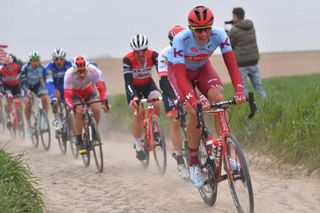
Nils Politt pounds his huge frame – bike and body – over the cobbles (Getty Images)
QuickStep dynasty reaches 700 wins
While Gilbert deserves special praise for the manner of his victory, it cannot be discounted that the Deceuninck-QuickStep roster flooded the top 10 with more than half their squad. First, third, sixth and eighth were simply an emphatic display of domination and proof that this squad is the Team Sky of Classics riding. The team have interchangeable leaders, numbers when it matters and an astonishing ability to avoid misfortune while their rivals are forced into mistakes. After defeats in Gent-Wevelgem and Flanders normality across the cobbles has been restored.
However, it could have been very different. At the finish in Roubaix, Tom Steels admitted that the boys in blue hit the panic button when a large group escaped in the first 100 kilometres and only Tim Declercq was present. The Belgian is a decent rider but he's no closer, and with so many riders clear, Quickstep would have been left floundering had Lampaert not made it across a few kilometres later. The Belgian nation champion saved the day at that point in the race and became a foil for the unstoppable Gilbert later.
With two riders in the key selection and Stybar mopping up counter attacks from the chase, Lampaert and Gilbert could work over the last opposition that Sagan and Van Aert could mount before Gilbert matched Politt's late move. Had QuickStep failed to win a second Monument this spring then the gloss would have worn off their campaign, but Roubaix merely acted as the final act in a story of almost complete dominance. The win also represented Lefevere's 700th win at the helm of a team. In a sport in which sponsors come and go, one of Lefevere's skills is to keep the wheels turning. It's a trait that has helped build a one-day dynasty. (DB)
Not all equipment gambles pay off
Alexander Kristoff went into Paris-Roubaix as one of the overwhelming favourites following consistent performances through his Classics campaign, including a victory at Gent-Wevelgem and third place at the Tour of Flanders.
Throughout this period, Kristoff has been racing on 25mm Vittoria Corsa 2.0 Graphene tubeless tyres with the new Campagnolo Bora WTO tubeless-ready wheels. The technology was adopted into off-road disciplines some time ago, and the Norwegian isn't the first to race tubeless in professional road races.
Speaking to Cyclingnews ahead of Paris-Roubaix, Kristoff said: "For me, they just feel better. I don't really know what the main difference is, but they roll well, and on the cobbles they don't feel bad at all - they feel comfortable."
Kristoff tested the tyres extensively on the Belgian cobbles and did a number of Roubaix recons with the tyres in the months and days leading up to the race. On race day, however, Kristoff suffered three separate punctures with the tyres before switching to a bike with traditional tubular tyres. Unfortunately for Kristoff, his race was over by then.
Kristoff admitted the choice was a "big risk" after the race, but the decision shows that even teams and riders seemingly at the top of their game can make mistakes. The extensive testing and recons failed to highlight that the chaos of Paris-Roubaix rarely lets you ride the best line over the narrow, cobbled roads and perhaps the wrong choice would've been more obvious had Kristoff ridden off of the best racing line during recons.
Taking a gamble at the Hell of the North didn't pay off. Kristoff, his team and their technical sponsors will more than likely stick to the tried-and-tested setups next year. (JE)
Wout van Aert can be proud of his pain
Wout van Aert admitted he felt 'terrible' after waking up on Monday and feeling the pain of racing, crashing and blowing up at Paris-Roubaix, but he insisted he had taken 'a huge step forward this spring'.
Much was expected of the former cyclo-cross world champion after his impressive 2018 debut, and Van Aert ended his cobbles campaign as one of the revelations of the spring.
Van Aert finished 22nd in the Roubaix velodrome. On paper that is worse than his 13th place in 2018, yet his performance was arguably one of the best and bravest of the race, as he fought back from a puncture in the Forest of Arenberg, a high-speed slide out on a corner, a bike change and two chases through the team cars on the cobbles. Despite all of that he made the decisive selection of the race with Philippe Gilbert and Peter Sagan, only to crack and blow-up in the race to the finish.
If a cobblestone was awarded to the gutsiest ride of Paris-Roubaix, Van Aert would deserve to hold it as he licks his wounds and battered pride.
Paris-Roubaix always exposes. It is a race of attrition and so Van Aert is no doubt asking himself what he could have done different or better. Should Jumbo-Visma have sent back riders to help him after his crashes? Perhaps. Did Van Aert and the team lose sight of the importance of race nutrition in the heat of the battle? Perhaps. Could Van Aert have ridden smarter? Perhaps.
For sure, he and Jumbo-Visma will debrief and learn from any mistakes and be back next spring stronger and more experienced. Van Aert will surely be a cobbled Classics contender for the next decade. (SF)
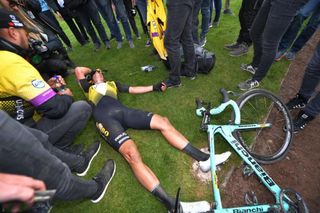
Wout Van Aert collapses after his Paris-Roubaix efforts (Getty Images)
Gilbert's 'Strive for Five' gets real
When Philippe Gilbert unveiled his ‘Strive for Five’ hashtag almost 18 months ago, there were more than a few eyebrows raised. Gilbert had won the 2017 Tour of Flanders and, after winning Liège-Bastogne-Liège and Il Lombardia earlier in his career, he only needed Milan-San Remo and Paris-Roubaix to complete the full set of cycling’s five Monument races.
We say ‘only’. At the time, despite his sensational return to Flanders, many saw it as a marketing gimmick for the twilight of the Belgian’s career, rather than a realistic prospect. Gilbert proved a lot of people wrong on Sunday with a performance that slots straight in among his very best.
Gilbert, world champion in 2012, was already among the best riders of his generation. The Roubaix victory cements his status as one of the greatest riders in history. He is the eighth rider to win four different Monuments, and the first to do so since Sean Kelly. He still has time to join Eddy Merckx, Rik Van Looy, and Roger De Vlaeminck as the only riders to win all five.
The Roubaix victory was the culmination in Gilbert’s transition from explosive puncheur to diesel engine capable of winning on the flatlands of Roubaix. Though Flanders contains punchy climbs, Gilbert’s 55km solo effort - born not of an attack but sustained forcing - did contain enough evidence of the direction he was taking. Given the remarkable success he has enjoyed on the cobbles since joining QuickStep on a one-year deal in 2017, it makes you wonder if it was actually a mistake not to have done more of these races earlier. The BMC years, where he was deployed in the Ardennes amid tension with Greg Van Avermaet, can seem in hindsight like a waste, even if they did yield an Amstel title and the rainbow jersey. Yet perhaps age was what saw his engine naturally develop into a diesel.
And yet, it’s that change that might just render the ‘Strive for Five’ all the more difficult, despite how close it now seems and despite the fact that if you were to look at Gilbert a few years ago and asked to pick the one Monument he’d be most unlikely to win, you’d have said Paris-Roubaix - not San Remo, where he finished third in 2008 and 2011. While Gilbert has been a regular aggressor on the Poggio over the years at Milan-San Remo, you feel he lacks his explosiveness of old and would struggle to match the likes of Alaphilippe and Sagan.
It’s similarly hard to see him winning a larger group sprint, even if he showed in Roubaix he still has a strong kick at the end of a hard race. Maybe he’d need to attack on the Cipressa and open up a race that normally remains shut until the Poggio. It seems fanciful, but Gilbert has talked about panache and taking inspiration from riders who take the race on from distance. He has a keen appreciation and respect for the history of the sport and proved that his Monument quest was to be taken fully seriously. It’s still a long shot, but no one will count Philippe Gilbert out anymore.
What a difference a year makes for Šiškevičius
This time last year, Evaldas Šiškevičius (Delko Marseille Provence KTM) was making the headlines for finishing Paris-Roubaix an hour behind Peter Sagan. After a heartbreaking race, Šiškevičius’ was a heartwarming tale of determination to finish.
Šiškevičius still had 30 kilometres to run when Sagan crossed the line. His team car was on the back of a flatbed truck after it had broken down and the driver of the broom wagon was desperate to go home. He would suffer a puncture on the Carrefour de l’Arbre, but he never gave up. The organisers even opened the velodrome for him, even though he would not officially register a finish time.
Many may have been put off by the experience, but fast forward 12 months and the story could hardly have been more different. While eyes were on the front group with Philippe Gilbert, Peter Sagan, et al, Šiškevičius was plugging away in the chase group. He even dared to launch an attack at one point.
With mechanical fortune on his side this time, Šiškevičius came into the Roubaix velodrome in a group that contained the likes of Greg Van Avermaet, Oliver Naesen and Zdenek Stybar. Rather than an hour behind the winner, he was just 47 seconds down and only five seconds behind Sagan. What a difference a year makes. (SO)
Sagan must look to Ardennes to make sense of his spring
Peter Sagan always tries to avoid making predictions before major races, but the three-time world champion was no doubt hoping for far better results than those he has secured this spring.
Sagan was often in the thick of action and could go with the decisive moves during the biggest races. Indeed, he forced the break that shaped the final of Paris-Roubaix but was unable to finish off with victory. For some riders, Sagan’s fourth at Milan-San Remo and fifth at Paris-Roubaix would be satisfying. But for a rider of his calibre and his palmares, they are below expectations.
Sagan seemed to lack lucidity – remember his Milan-San Remo sprint mess-up? He lacked the decisive extra endurance needed for the 250km+ monuments and elsewhere; he lacked the finishing speed needed to turn a respectable placing into victory.
A stomach problem, losing four kilogrammes and five days of training at the end of his February altitude camp, apparently left Sagan playing catch up in March and into April. He tried valiantly, often without enough team support, but was always lacking that usual Sagan magic that has previously allowed him to make winning look far easier than it ever is.
Now the Slovakian and his Bora-Hansgrohe team have to regroup and find extra motivation for the rest of their spring campaign. While their cobbled Classics rivals relax and enjoy a break, Sagan has to ride Amstel Gold Race and Liege-Bastogne-Liege and try to win one of them if he is to make sense of his spring.
But that sparks the natural question: if Sagan can’t compete for victory against his cobbled Classic equals, how can he now hope to compete against the likes of Valverde, Kwiatkowski, Dan Martin and everyone else who have been carefully preparing for the Ardennes Classics? (SF)
